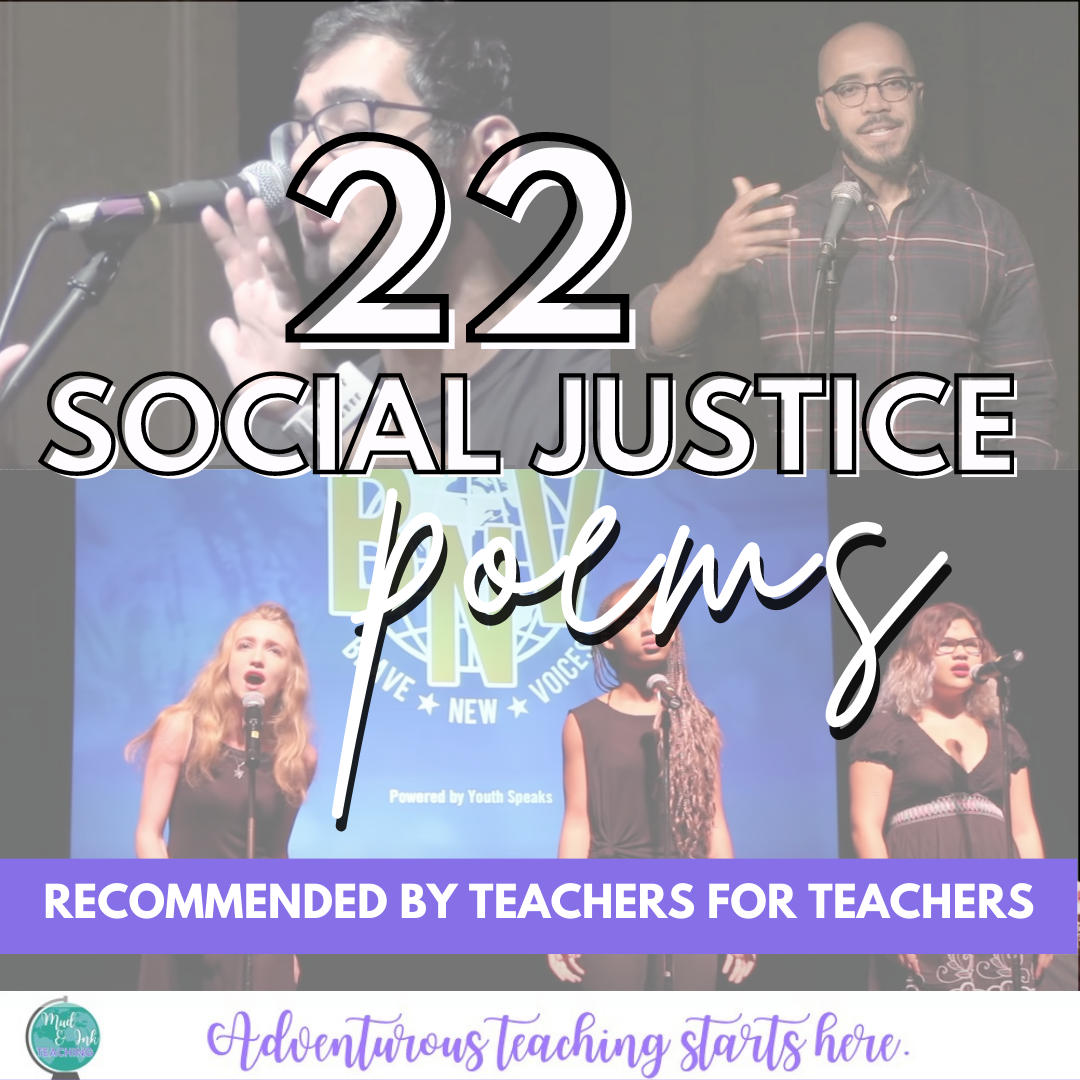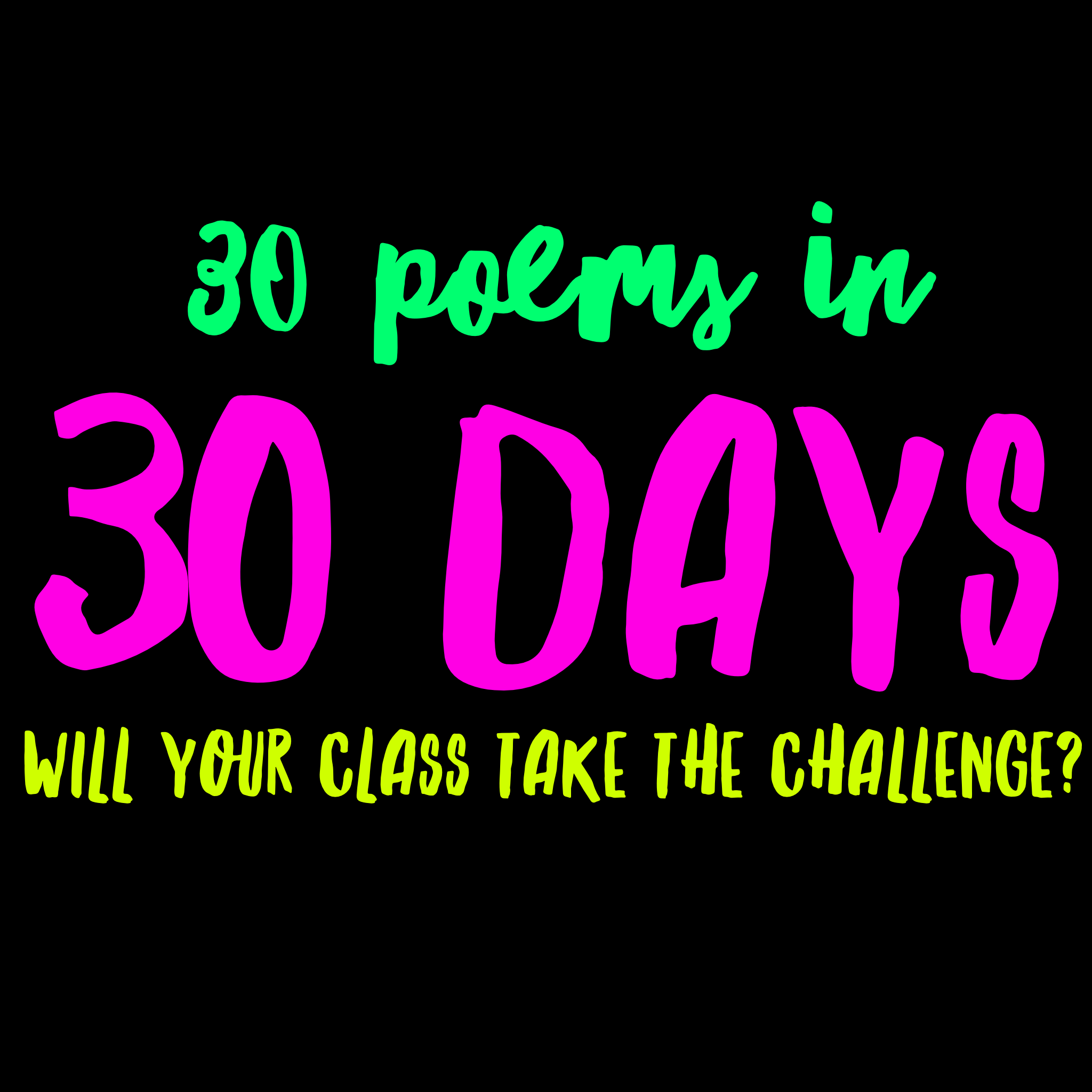
ADVENTUROUS TEACHING STARTS HERE.
22 Teacher Favorites: Poems for Social Justice
Poetry is one of my favorite vehicles to have these critical thinking discussions about social justice. The voices in poetry are so raw, real, and products of the moments from which they came. This list of 22 came from talking to teachers online about their favorites to use in the classroom, as well as my own experience teaching poetry and creative writing.
12 Nature-Themed Activities for Secondary ELA
There is a long history of connectedness between literature and nature. From the important role that setting plays in any given story to the prolific use of nature as symbolism, but I somehow always felt distant from the outdoors inside my classroom. Here are twelve lesson plan ideas to engage your students with nature.
Valentine's Day Activities for High School ELA
Valentine’s Day is the perfect way for ELA teachers at the high school level to have a little bit of fun and give students the chance to be creative. English classes almost always have a series of novels and characters at the ready, so why not ask students to write some haiku love poems between characters? Here’s the activity, how it started, and how to do it yourself.
Must Listen Podcasts for English Teachers
If you’re new to the podcast world, let me give you a big, warm WELCOME! Podcasts have been a game-changer for me both for professional development and for adding new texture, voices, and perspectives to my Essential Question based units.
The curated list below is broken into these two categories: podcasts for PD and podcasts for content. Each of these will inspire you with new ideas and restore your joy and love of teaching at your core.
5 Common Mistakes Teachers Make When Teaching Figurative Language
Raise your hand if the first unit of your school year is a short story unit with figurative language terminology review? Yes? This is unit one in thousands of English classrooms and this makes me wonder…if they’ve done this so many times, why aren’t they experts? How is it that by unit 2, the next time we encounter an example of personification, they’ve forgotten the term altogether?
The thought process here is logical: provide terms, provide definitions, provide examples, practice, practice practice = learning has succeeded. But we see this doesn’t actually happen. So what’s not working?
7 LatinX Poets You Should Be Teaching Right Now
Poems and poets come from all over the world and deliver POWERFUL and NEEDED perspectives to our students in a short, compact manner. Poetry studies don’t take the time that novel studies do. Pairing our texts alongside poems that provide additional voice and contrast is a critical practice that all English teachers should be working to make a regular occurrence in the classroom.
How to Use a Makerspace in the ELA Classroom
If you aren’t familiar with a makerspace, it is a place where students can create, problem solve, and collaborate. One of the greatest benefits of implementing a makerspace is that it shakes things up from your normal routine. It gives your students the chance to get silly and creative while giving you the gift of seeing your kids in a totally different light. Not only does it foster learning through inquiry, but it also helps to build overall classroom community.
12 Ideas for Teaching American Lit
These are 12 fresh, new ideas for shaking up your American Literature curriculum: from essential questions to literary food trucks, take these ideas to change up how you’ve done things in the past.
9 Poems from Black Poets to Teach This Year
All to often, our list of Black poets and artists gets limited to the writers who have been anthologized over an over again. I see Langston Hughes “Harlem” and Gwendolyn Brooks’ “We Real Cool” and Maya Angelou’s “Still I Rise” over and over again. These poets, phenomenal poets, are often reduced to that one single poem, or, even more damningly, the end of the list of Black poets that students are exposed to in high school. LET’S CHANGE THAT.
How to Make a Digital Poetry Choice Board
In five easy steps, let me walk you through and demonstrate how easy it is to create a digital poetry choice board. I even have a free template for you to download and get started!
Where I'm From - A Video Poem for Teachers
Teachers are amazing humans. Teachers take care of everyone around them, quell fears, and keep marching forward no matter how dire the situation. To show our love for this amazing, exhausting, and vital work that we do, a few creative online teacher friends got together to write a poem. Yes, we wrote a poem together from entirely different parts of the country, and compiled a video version here to share with you.
12 New Poetry Lesson Plans for Secondary ELA
If you are ready to tackle some fresh, new ideas this upcoming National Poetry Month or during other parts of your school year, I gathered together some of the best poetry minds that I know out here in the teacher blogging community. Together, we’ve come up with twelve ideas to try during National Poetry Month and I’ve broken them into categories for you: COLLABORATE, PLAY, DIG, CREATE, & REACH.
The Cento Poem
The word CENTO means “patchwork”. The goal of a cento poem is to pull together lines and phrases from the writers and world around you and arrange them in a meaningful way to create something new. If scraps of fabric can form a brand new object (a quilt), then so can language form a brand new poem. And that’s what I love to teach my high school students.
30 Poems to Teach Using The Big Six
I love this poem. I love the imagery, the title, the metaphor, but most of all, I love how teachable it is. The poem has a great deal of mystery and room for debatable discussions about author’s intent, but it’s also accessible to students who might feel intimidated by poetry - or even just intimidated by language.
That was the goal I had in mind while making this list: I wanted to find poems that were challenging and worth discussing in class, but also poems that could be tackled by students in one or two class periods. As a guide, I used The Big Six as my foundational analysis tool . If you’ve never used it, get on board!
"How to Be A Person" A Spoken Word Poem to Reset Your Classroom Culture
Whether I’m starting a brand new school year, returning after winter break, or even just starting a new quarter, there’s always this itch in my gut that tells me to take a breather on those first few days together to regroup and reset our classroom culture and community. It’s vitally important to take the temperature of your classroom - has it been feeling toxic lately? Are students there to be the best versions of themselves? Are we having fun but not working hard? Are we working really hard and don’t know each other at all?
Slam Poetry 101: An Introduction
I can't think of a more authentic experience that I've had teaching poetry with my students than through the incredible power of slam poetry. Here in Chicago, we're lucky. The slam poetry scene is strong. We're actually the city that gave birth to the slam poetry movement in the 80s...
Teaching the Poetry Mashup
If there is one thing that is constant among generations of teenagers, it is the love of music. And if there’s one thing that English teachers know, it’s that music is the perfect gateway to getting students into poetry. Today, I’d like to share an awesome poetry/music pairing to try in your own classroom: Carl Sandburg's “Chicago” meets Patrick Stump’s “This City is My City”. The Literary Maven has an incredible blog post out about poetry mashups (coming in April!) with lots of suggestions from other ELA teachers, but I wanted to share my mashup here in a bit more detail for you all.
How to Design a Poetry Unit that Doesn't SUCK
Have you ever done a Google search for "poetry ideas" to teach in your high school English classroom? Let me spoil those search results for you - THEY'RE LAME! Poetry, especially at the high school level, it too important to be treated as a coloring activity, or worse, ignored completely.
Can your class write 30 poems in 30 days?
If you love poetry, and you're a little bit competitive (like me!) then I have just the challenge for you! How about jumping on the #30poems30days Challenge!
This year in creative writing, I've decided that I want my students to have access to as many different styles of poetry as possible. That's why I've narrowed down my 30 favorite types of poems to teach - and I'm going to teach them all in just 30 days!





















